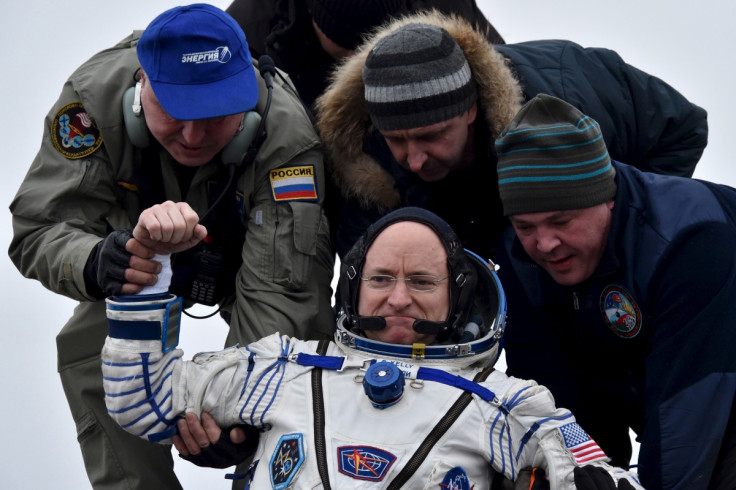Scott Kelly livestream: Watch Nasa astronaut discuss Year in Space live online

Scott Kelly is safe and back on earth after spending nearly a year in space on the International Space Station. He and his Russian counterpart Mikhail Kornienko have spent a total of 340 days in space – the longest time any American astronaut has spent away from Earth without a break. In total, Kelly has spent a total of 520 days in space, so he now also holds the record for the most time spent in space among US astronauts.
The aim of the Year in Space mission was to determine how staying in space for a prolonged amount of time affects the human body so as to prepare it for future journeys to Mars, which could last between two to three years. To this purpose, Kelly completed nearly 400 scientific experiments on his environment and on his own body to understand how it responds to weightlessness, radiation, and the stress of long-distance spaceflight.
His twin brother, Mark Kelly, completed identical experiments on Earth, to give researchers the basis for a solid comparison of their health status.
A press conference will take place on Friday 4 March. Nasa scientists will answer questions about the mission's objectives, its accomplishments, and all the science behind it. Scott Kelly will then share his personal experience on the ISS.
You can watch the press conference live below, or on NASA TV:
At 11am EST (4pm GMT), a first meeting will be held with Nasa scientists and doctors. They will go over the scientific principles driving the Year In Space mission.
At 1 pm EST (6pm GMT) key Nasa members are expected, for a discussion regarding the accomplishments of the mission and what they mean for future explorations to Mars. They will go over the more than 400 experiments carried out by Scott Kelly, and the next steps to take.
At 2 pm EST (7pm GMT) Scott Kelly will take centre stage. He is expected to discuss his experience in space, his perspectives after such a long time away from Earth and answer questions. Those following the briefing on social media may ask questions using the hashtag #askNASA.
© Copyright IBTimes 2025. All rights reserved.






















